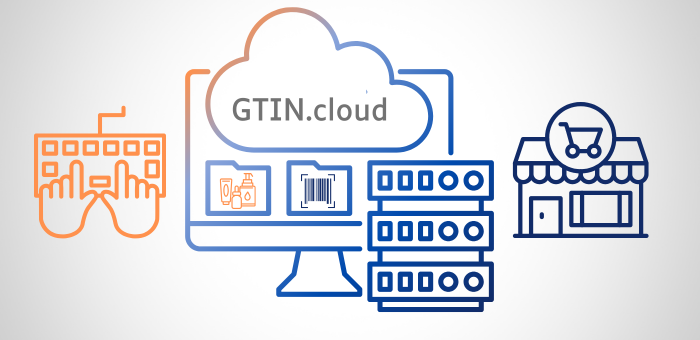Global UPC Database and UPC Product Registries
Fact: There is not currently a single recognized global UPC database. Unfortunately, there are numerous online websites that incorrectly claim to be authorized databases and they provide non-validated information. Click here to read about UPC Data Accuracy Problems.
There are essentially five different categories of databases and registries which host UPC product data.
- – Internet UPC Databases
- – GTIN.Cloud
- – GS1 Tools & Registries
- – Global Data Synchronization Network (GDSN) & Product Catalog Services
- – Proprietary Company Databases
Internet UPC Product Databases
Unlike the databases in the other four categories, the UPC product data on internet databases is not entered or managed by the brand owner of a product. Consequently, internet UPC databases should not be considered a source for reliable information. If you perform a Google Search for “UPC database” or try to search a UPC on the search engine, the results will display an array of official-sounding names conveying they are the definitive UPC database. These websites host an enormous amount of UPC data but they are non-validated nor reviewed for accuracy. Internet UPC databases either rely on “crowd entered” data or automated web scraping.
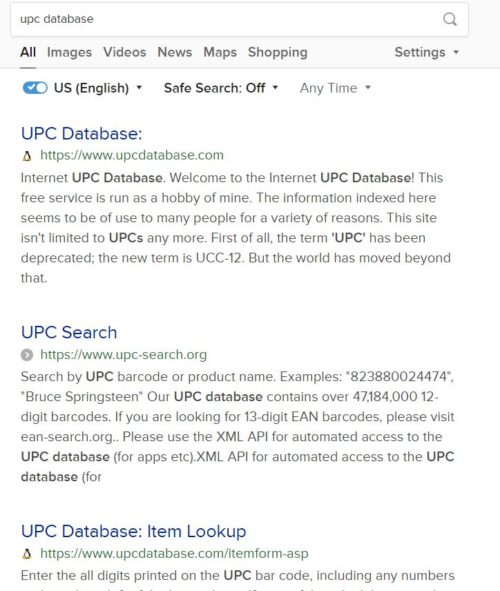
Crowd entered data is similar to information entered on a wiki. Users around the globe voluntarily provide information and occasionally images of actual products. As you can guess, this process pollutes and diminishes the accuracy of the data a brand owner hopes to convey for their products.
Web scraping is now a very common practice where bots automatically scour the internet for product data associated with a UPC (GTIN) and aggregate its finding in a lookup. These types of websites do not functionally validate between brand owner entered data versus crowd. Web scraping services typically provide services to other web and mobile developers so their applications can pull up product data from a UPC barcode scan. Consequently, these new applications are unaware they are conveying information not necessarily provided by the brand owner. In essence, this is like the old “telephone game” where information is constantly altered as it moves from one person to the next.
GTIN.Cloud | Brand Managed Global Repository for UPC Product Data

GTIN.Cloud (www.gtin.cloud) is the online resource that manufacturers upload and manage their UPC product data. The GTIN management function enables companies to assign and activate their GS1 GTINs, associate product data attributes, upload image links, and create digital .eps barcode files. All entered UPC product data is personally validated by an assigned GS1 barcode consultant before UPC are published. UPC product data can be exported to other data resources, such as GS1 Data Hub, Amazon and Google Merchant center. (see below)
Access to the GTIN.Cloud is included with all GS1 Barcode Service/Support programs. As of 2025, GS1 Digital Link QR Codes can be obtained through the UPC management portal.
Companies who are new to UPC barcoding can obtain GS1 UPC Barcode Service at www.barcode-us.com .
Verified By GS1 and DataHub
GS1 is the global standards organization with local country offices around the globe. Aside from managing identification standards, a critical role of GS1 is the licensing Company Prefix and single GS1 GTINs.
There are GS1 tools, both free and paid-subscriptions, which retailers and marketplaces (Amazon) use to validate brand ownership. Although some basic product attributes can be optionally provided, the tools are not currently comprehensive. There are future GS1 initiatives underway to start improving the depth of the provided data for products marked with UPCs from either a licensed GS1 Prefix and/or a single GS1 GTIN.
One of the primary reasons, manufacturers (brands) need to obtain their own Company Prefix or GS1 GTIN UPC is that this is the ONLY way their company information can be associated with their UPCs. Click Here To Correctly Obtain UPC Barcodes.

GS1 Global operates a robust and publicaly available tool called GEPIR (Global Electronic Product Information Registry). By keeping their licensing information current with GS1, members can have their UPC ownership traced and validated. GEPIR only denotes the licensed brand owner and doesnt contain UPC product data information. Please visit https://gepir.gs1.org/ to view UPC ownership information.
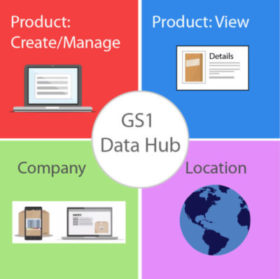
Data Hub is a suite of tools provided by GS1 US to help improve identification in the marketplace. While GS1 is a non-profit standards organization, they still charge subscription fees for the various Data Hub functionalities. When companies get their Company Prefix licenses and Single GTIN UPCs from GS1, they automatically get access to the Product Create/Manage component. This is like a cloud hosted xls file of a company’s UPC product data, but very limited. Where the Create/Manage tool is geared for suppliers to enter data, the View/Use allows companies the ability to view product data. Companies must pay separate subscription fees to access this data. Please read “What Exactly is Data Hub?” to learn more.
Global Data Synchronization Network (GDSN) & Product Catalog Services
The larger retailers in certain industries require their suppliers to publish their product data with 3rd party catalog companies (aka data pools). Due to the vast number of available items in industries such as Grocery and Apparel, manufacturers can publish all of their UPC product data in a single source and subscribing retailers can pull this information into their own inventory/accounting systems. This eliminates redundant work because suppliers just have to manage one catalog.
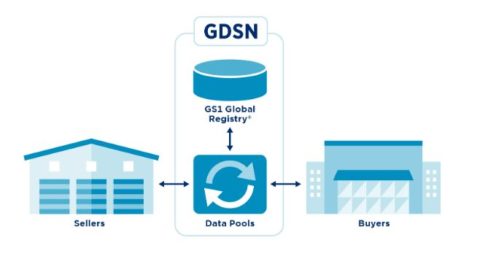
Even though 3rd party UPC product catalog companies have existed since the 1990’s, there was a need a synchronize the various catalog databases so GS1 created the GDSN (Global Data Synchronization Network). Through standards, the GDSN initially worked on creating common data attributes acceptable for all of the catalogs and retailer systems. The GDSN allows suppliers to globally exchange standardized product data with their trading partners. There are currently 44 certified data pools (catalog companies) that provide subscription services to utilize the GDSN. These services are fairly expensive for new companies and usually are mandated by a specific retailer. To learn more, please visit www.gs1.org/standards/gdsn.
Proprietary Company Databases
Larger technology companies, such as Google and Amazon, maintain their own database of UPC product information. This information is furnished by brand owners so they can control the accuracy on a platform.
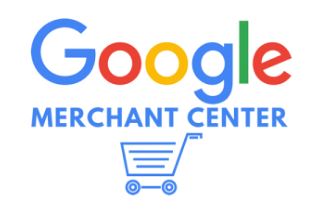
The Google Manufacturers Center is a tool ensuring manufacturers that their products are listed correctly on Google Search, Google Shopping, and other Google Services. The Manufacturers Center is Google’s repository for accurate and reliable product data. When someone searches for a specific product on Google, the manufacturer is empowered to control the authoritative product description which gets displayed.
Trust Only Brand Owner Provided UPC Product Data
As today’s shoppers rely on computer and mobile web searches, accurate product data is imperative. Consumers need to be aware of the source they are using to garnish product data. Brand owners have the ability to make an impact how their product information is published.
As the authority on UPC implementation and barcode origination, we assist tens of thousands of companies every year. Included with the GS1 Barcode Service is UPC management and product data content assistance. The GTIN.cloud global UPC Product Data repository also serves as the GTIN management portal companies use to assign their GTINs and create their barcodes. Our certified consultants validate our clients’ provided product data for accuracy prior to publishing. As the primary portal GTIN data can be exported to all types of other databases, including Amazon, GS1 DataHub, and Google. Click Here To Learn More.
We Are Here To Help!
Please contact us at 888.540.6885 or chat with us online If you would like to set up a call with a consultant for assistance, please use the button below.



